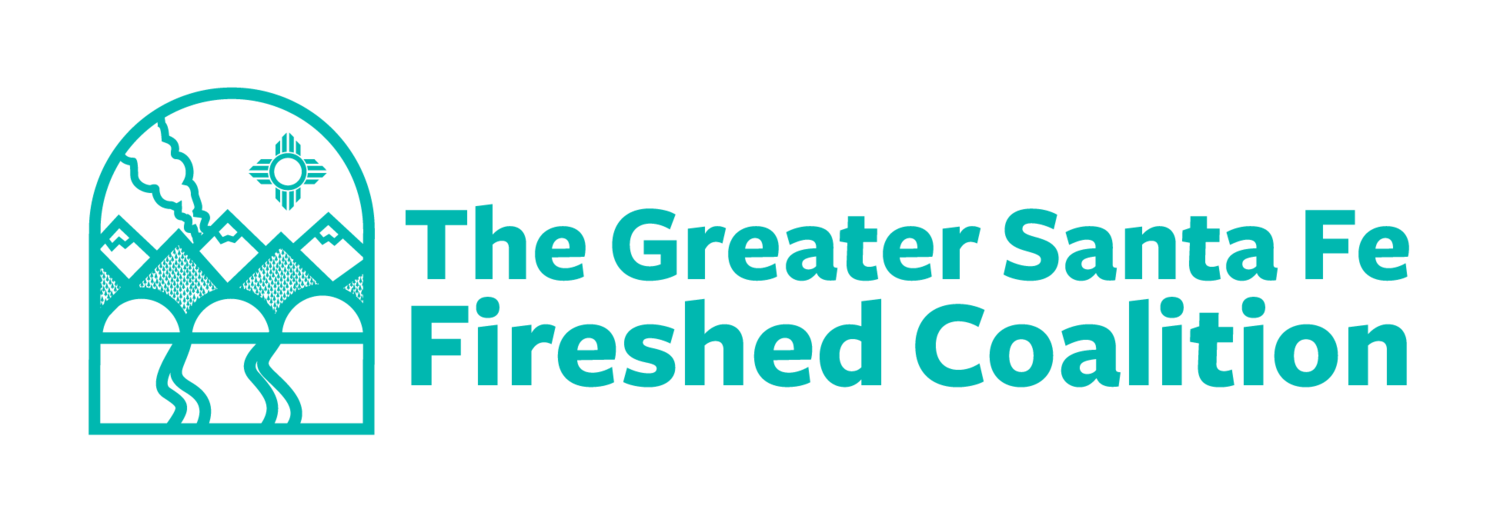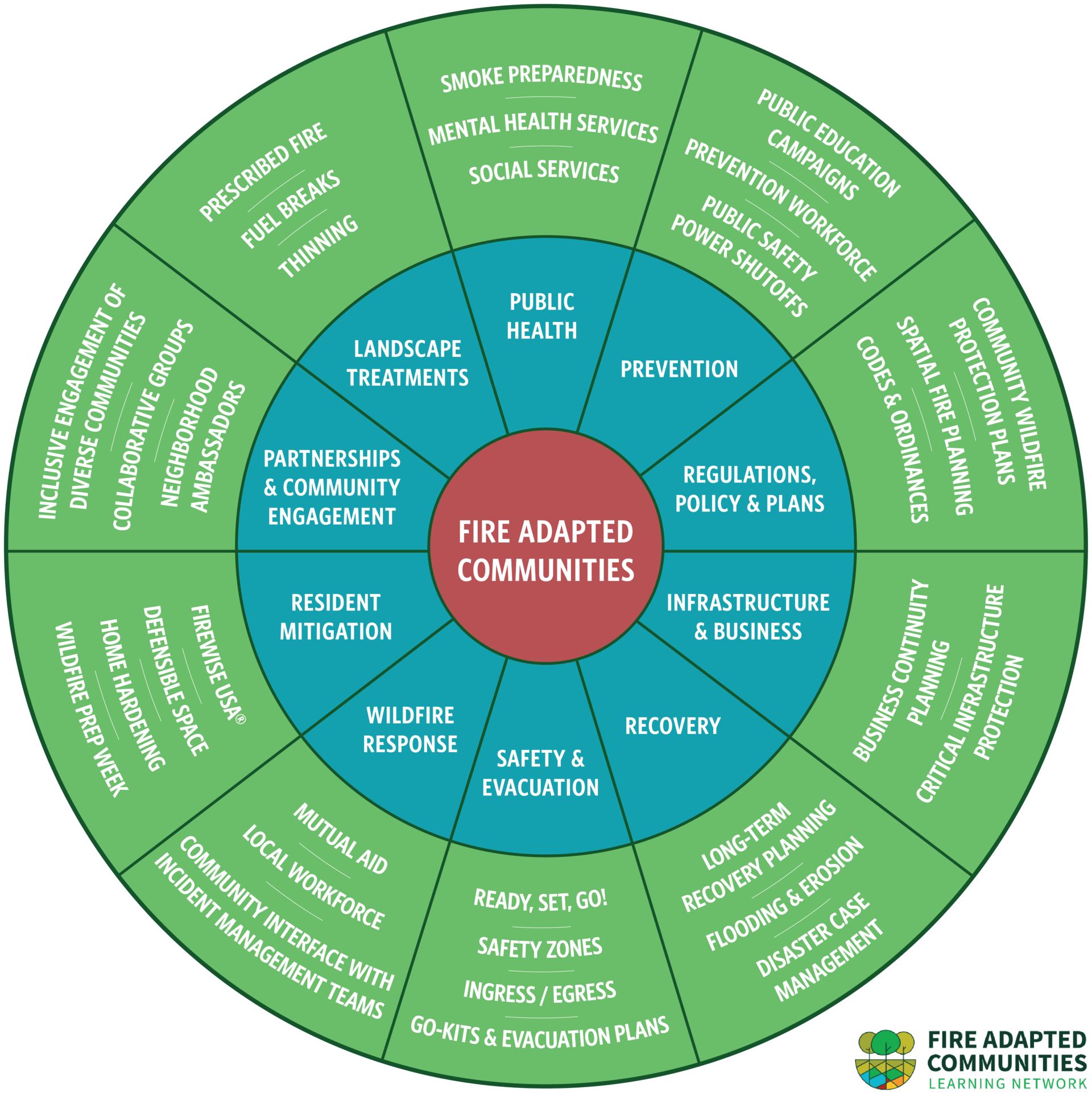Hi Fireshed Community,
Much of the work that we do towards community wildfire adaptation in the Greater Santa Fe Fireshed involves working together across boundaries and across disciplines. The Fire Adapted Communities framework may be helpful in guiding some of our work in Santa Fe. Fire Adapted Communities include community leaders, fire departments, local businesses, local governments, and land management agency representatives. It involves many people working in different roles, towards the common goal of making our communities better adapted to the reality of wildfire. The Fire Adapted Communities graphic and facilitator’s guide are helpful tools to support our work within and across these different roles. With that in mind, today’s Wildfire Wednesdays revisits the FAC graphic and facilitator’s guide as a framework for our development of Fire Adapted Communities.
This week’s Wildfire Wednesdays includes:
Fire Adapted Communities Graphic and Facilitator’s Guide
An Index of Funding Opportunities developed by Coalitions and Collaboratives and the Watershed Research and Training Center
Best,
Gabe
Fire Adapted Communities Graphic and Facilitator’s Guide
This graphic and facilitator’s guide were designed to help explain the fire adapted communities (FAC) framework. It describes a set of components that make up community wildfire adaptation, and gives examples of specific programs and activities that communities can undertake to reduce their wildfire risk and increase their resilience. Remember, FAC is not a one-size-fits-all approach; every community’s journey to living better with fire is unique. This graphic was created by the FAC Learning Network with input from community-based practitioners from across the United States.
Important Notes
This graphic is NOT comprehensive. It does not include all of the potential actions or programs a community could undertake to advance fire adaptation. The graphic includes examples of some of the most common actions and programs. When talking about FAC, you should include examples that are relevant to efforts in your community.
This graphic is not a checklist. Community-based leaders are best positioned to change a community's relationship with fire. Every community has different assets and challenges, and contexts that are always changing. Do not instruct people to use this graphic as a checklist. It is intended to inspire people to consider a range of issues and actions, not prescribe strategies for communities.
The content in this graphic was contributed by fire resilience practitioners working across the United States. Not all of the programs or actions will be priorities for your community.
What does this graphic explain?
The graphic is designed to communicate the fire adapted communities (FAC) framework. It depicts a set of components that make up community wildfire adaptation, and gives examples of specific programs and actions that a community could undertake to advance their work. FAC is not a one-size-fits-all approach. Community context matters and it is dynamic.
When should you use this graphic?
The FAC graphic can be used in presentations, or workshops where a facilitator walks participants through the graphic. The standalone graphic can also be used on websites or in printed materials. However, in these applications we encourage users to include a written description to explain that the graphic is not prescriptive or comprehensive of all valid FAC approaches.
Who is the graphic for?
The graphic can be used with community partners, FAC practitioners, the media, and agency partners. When talking with different audiences, remember to use language that will resonate with them. This graphic was designed with community wildfire resilience practitioners as the primary audience, so some language may be need to be adjusted for use with community members or others. Adapt the examples and language in this guide as needed to best reach your intended audience.
Grants and Funding Opportunities
Finding and managing funding for climate mitigation and forest resilience may appear challenging, but fear not. There exists a multitude of financial resources dedicated to support creating sustainable and fire-adapted communities, creating healthy and resilient landscapes, and safe and effective wildfire response.
To support your development goals, the Watershed Research and Training Center and Coalitions and Collaboratives have created a Grants and Funding Opportunities page.
BIL/IRA funding opportunities
The Bipartisan Infrastructure Law and Inflation Reduction Act provisions and funding broadly support these efforts through grants and agreements. The four main grant categories are listed below.
Community Wildfire Defense Grants
IRA Forest Landowner Support
Wood Innovations Program Grants
Urban and Community Forestry
Other funding opportunities
Combining grants from various sources broadens the pool of funding, lessening reliance on any single source and bolstering financial stability and resilience. Below are potential funding avenues to fortify your community’s capacity for climate resilience.
This effort is supported through the Community Navigator Program of the USDA Forest Service.

